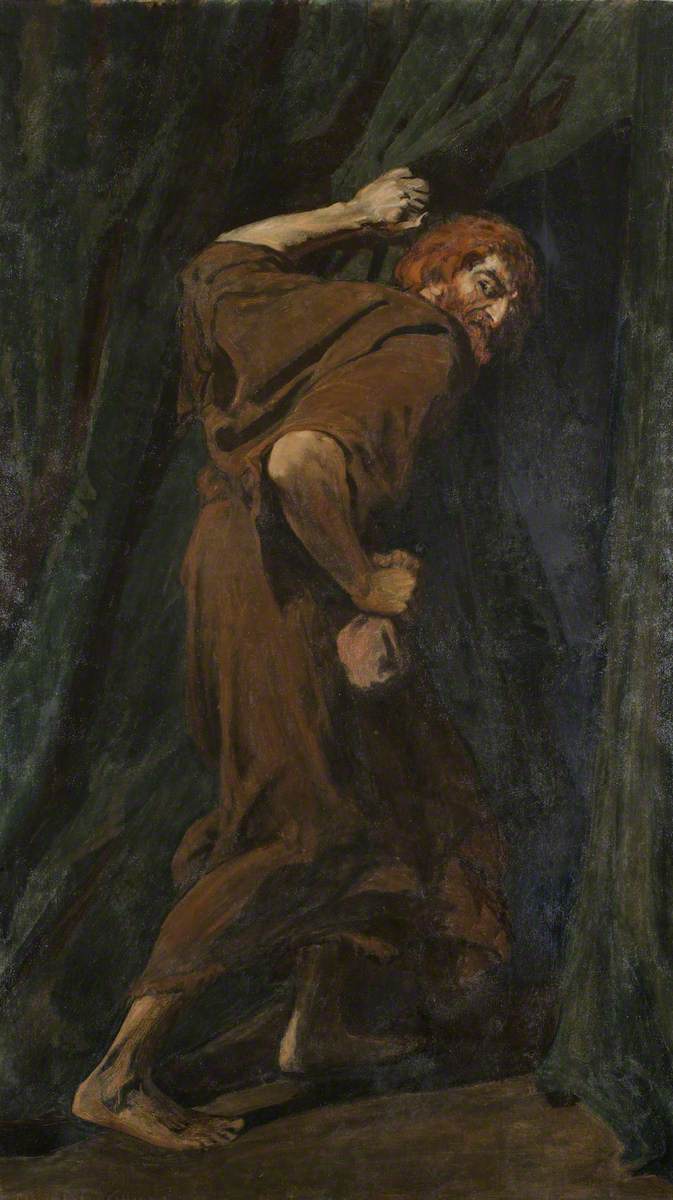Readers: The Gospel of Nicodemus: Judas went home to make a noose of rope, in order
to hang himself, and he found his wife sitting down and roasting a cock over a charcoal
fire prior to eating it.
He said to her, “Get up, wife, and find a rope for me, because I want to hang
myself, as I deserve.” But his wife said to him, “Why are you saying these sorts of
things?” Judas said to her, “In truth, you should know that I have handed my teacher
Jesus over in a wicked way to the evildoers, so that Pilate might execute him. But he will
rise again on the third day – and woe to us!” His wife said to him, “Don’t speak or think
like that. For it is just as possible for this cock roasting over the charcoal fire to crow as
for Jesus to rise again, as you are saying.”
And immediately, as she finished speaking, that cock spread its wings and crowed
three times. Then Judas was convinced even more, and immediately he made the noose of
rope and hanged himself.
Although lost for centuries, the Gospel of Judas was known to have existed because it was mentioned by St. Irenaeus of Lyon, who condemned it as a fiction in AD 180. However, a Coptic translation (c. 300) of the original Greek text was discovered in a codex found in Egypt in the 1970s. In 1978 the codex was acquired by an Egyptian antiquities dealer, who placed it in a safe-deposit box in New York state, U.S., after his attempts to sell it failed. It remained there until 2000, when it was purchased by the Swiss-based Maecenas Foundation for Ancient Art. The reconstruction of the folios and a study of their contents were commissioned, and the text of the gospel and a translation were made public in 2006. Along with the Gospel of Judas, the codex contains the pseudepigraphal (noncanonical and unauthentic) First Apocalypse of James, a letter of the apostle Peter, and a section of a badly fragmented work provisionally identified as the Book of Allogenes or Book of the Stranger, a Gnostic text that was also among the codices found at Najʿ Hammadi in 1945.
Some biblical scholars are calling the Gospel of Judas the most significant archaeological discovery in 60 years.
The only known surviving copy of the gospel was found in a codex, or ancient book, that dates back to the third or fourth century A.D.
The newly revealed gospel document, written in Coptic script, is believed to be a translation of the original, a Greek text written by an early Christian sect sometime before A.D. 180.
The Bible's New Testament Gospels—Matthew, Mark, Luke, and John—depict Judas Iscariot, one of the Twelve Apostles of Jesus, as a traitor. In biblical accounts Judas gives up Jesus Christ to his opponents, who later crucify the founder of Christianity. (Here's what we know from historical evidence about the Twelve Apostles.)
The Gospel of Judas, however, portrays him as acting at Jesus' request.
"This lost gospel, providing information on Judas Iscariot—considered for 20 centuries and by hundreds of millions of believers as an antichrist of the worst kind—bears witness to something completely different from what was said [about Judas] in the Bible," said Rodolphe Kasser, a clergyman and former professor in the Faculty of Arts at the University of Geneva in Switzerland.
Kasser, who is regarded as one of the world's preeminent Coptic scholars, led the effort to piece together and translate the Gospel of Judas. The National Geographic Society and the Waitt Institute for Historical Discovery funded the project, and it will be profiled in the May 2006 issue of National Geographic magazine.
Scholars say the text not only offers an alternative view of the relationship between Jesus and Judas but also illustrates the diversity of opinion in the early Christian church.
"I expect this gospel to be important mainly for the deeper insight it will give scholars into the thoughts and beliefs of certain Christians in the second century of the Christian era, namely the Gnostics," said Stephen Emmel, a Coptic studies professor at the University of Münster in Germany.
در دوزخ دانته، یهودا به پایین ترین دایره جهنم محکوم می شود: حلقه نهم خائنان، همچنین به عنوان دریاچه یخ زده، کوسیتوس شناخته می شود. او یکی از سه گناهکاری است که به قدری شرور تلقی می شود که محکوم به جویدن در دهان شیطان سه سر است (بقیه بروتوس و کاسیوس، قاتلان جولیوس سزار). دانته می نویسد که یهودا - که با خیانت به خود پسر خدا مرتکب خیانت نهایی شده است - در آرواره های سر مرکزی شیطان که گفته می شود شرورترین از این سه نفر است، توسط سرش گیر افتاده است و پشتش را ترک می کند تا چنگک بزنند. توسط چنگال فرشته افتاده است
In Memoirs of Judas (1867) by Ferdinando Petruccelli della Gattina, he is seen as a leader of the Jewish revolt against the rule of Romans.[106]



























